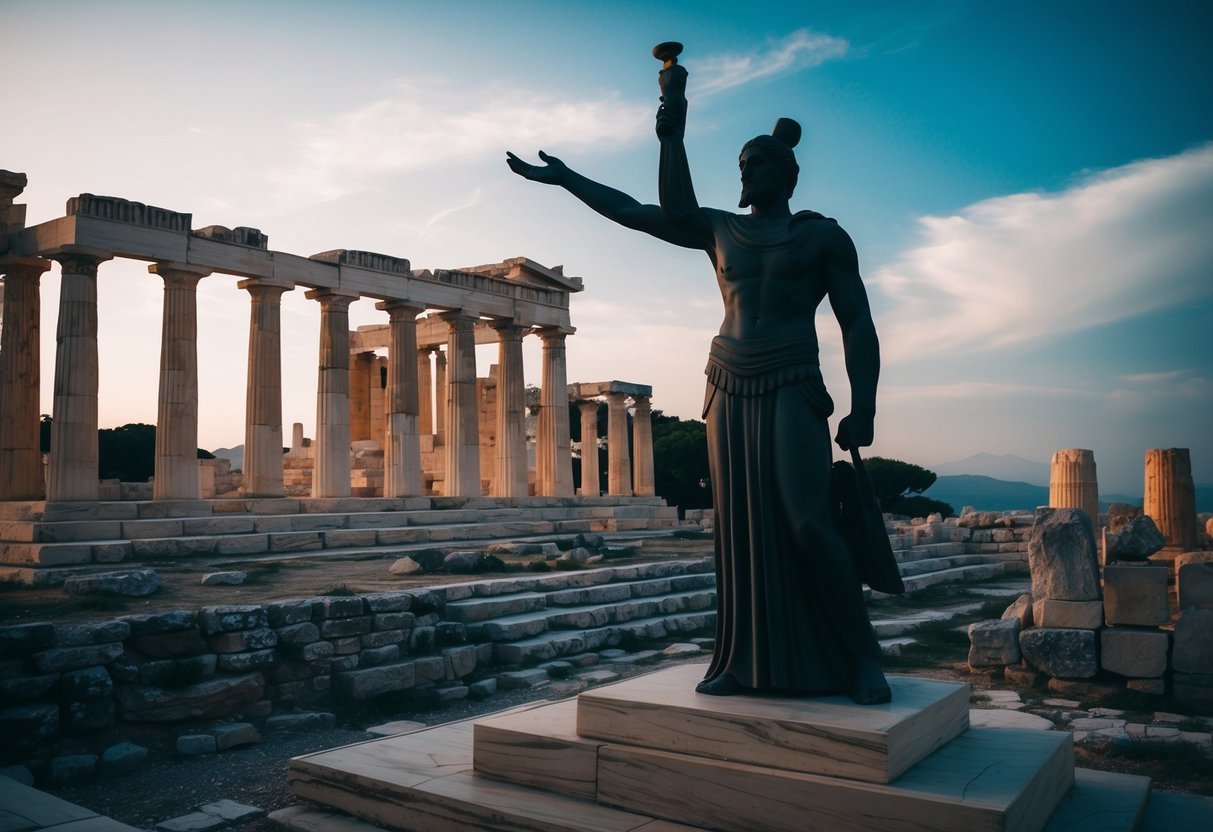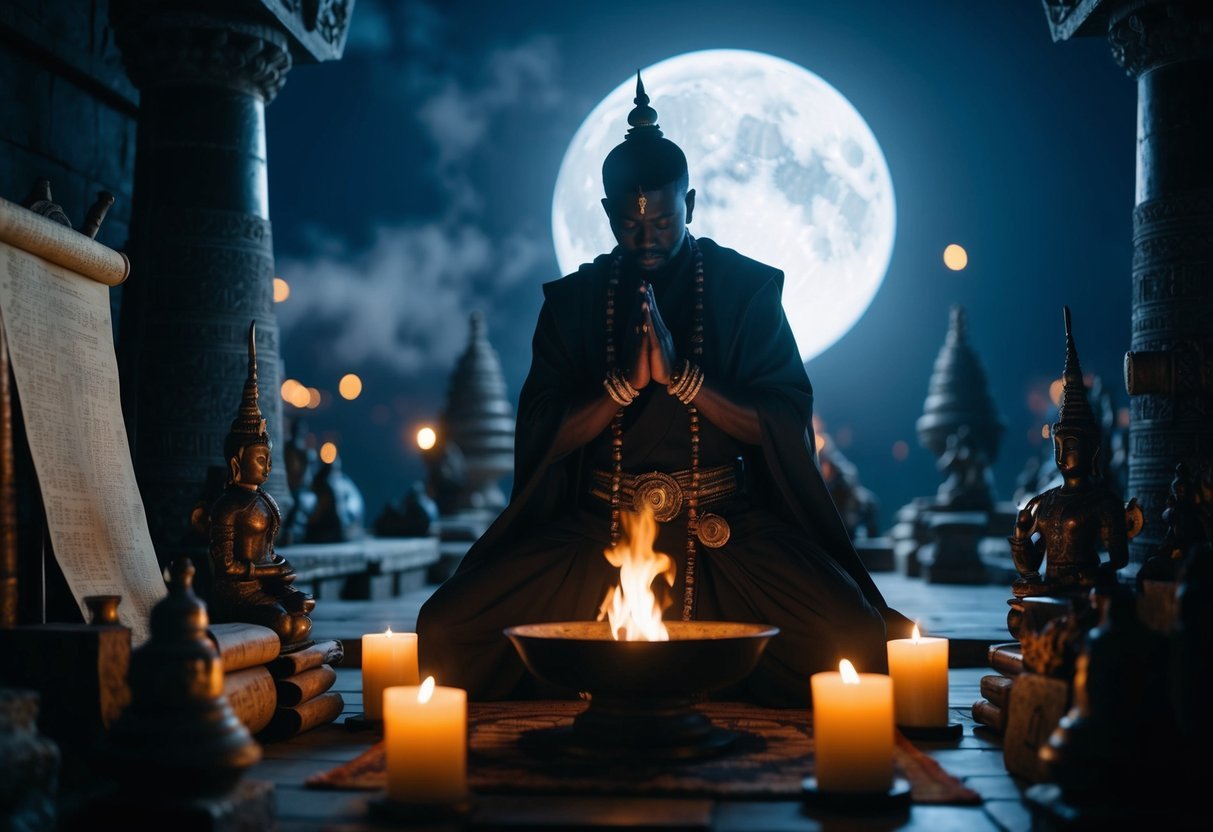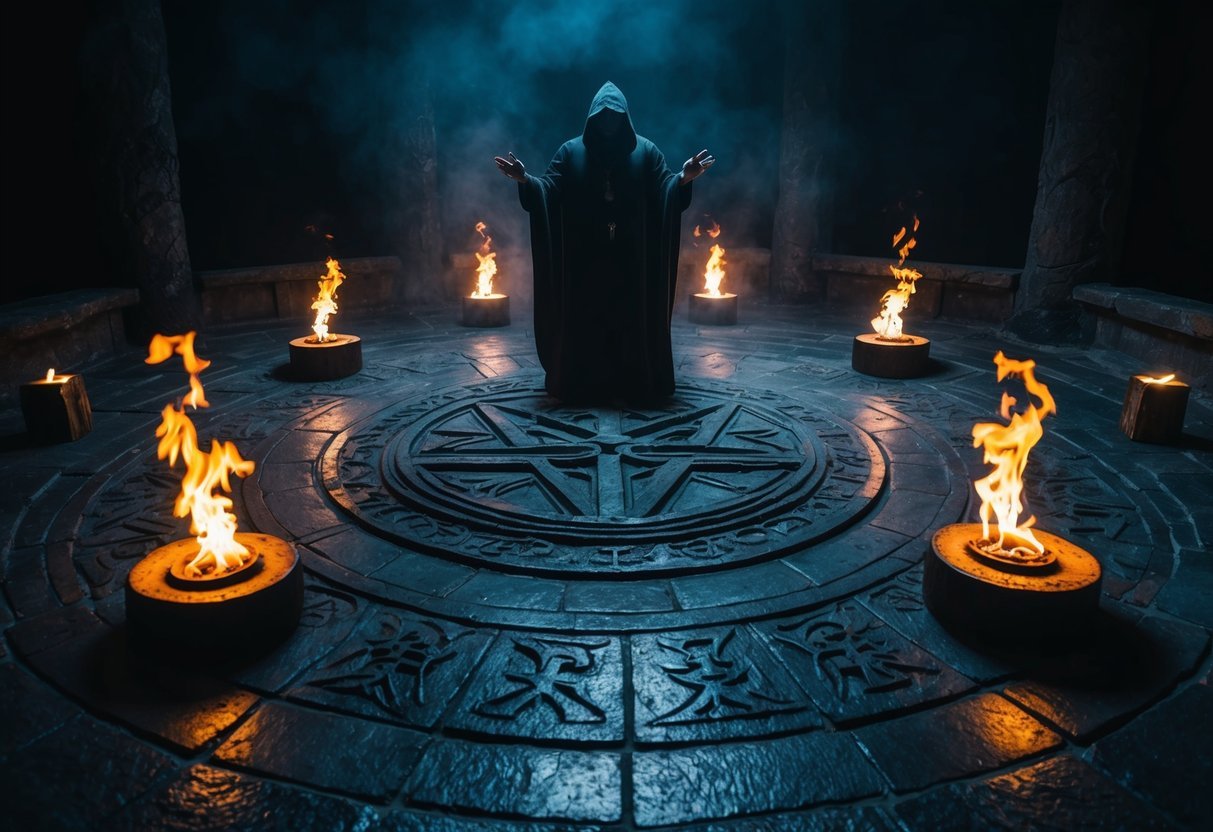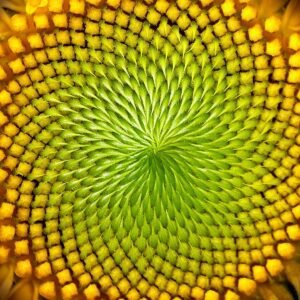In the mysterious realm of ancient Greece, necromancy was more than just a practice; it was an enigmatic facet of society steeped in beliefs about the afterlife and communication with the dead. Necromancers in this era were revered and feared, as they claimed the ability to bridge the worlds of the living and the dead by summoning spirits to gain hidden knowledge. At the heart of Greek necromancy was the quest for wisdom and divination, often conducted at sacred sites thought to be entrances to the underworld controlled by Hades.

Greek literature and myth frequently reference necromancy, showcasing its significance in ancient culture. Epic tales, such as those of Odysseus’s journey, illustrate necromantic rituals that guided heroes through daunting challenges. These narratives reveal not only the widespread acceptance of necromancy but also its deeply rooted association with religious and ceremonial practices.
The influence of necromancy extended into various aspects of Greek society, affecting how individuals perceived life and death. Through elaborate rites and rituals, necromancy sought to unlock secrets of the underworld, offering insights that could only be obtained by communing with the deceased. This complex relationship between the living and the afterlife highlights the enduring legacy of necromancy in shaping cultural and spiritual beliefs in ancient Greece.
Key Takeaways
- Necromancy played a critical role in ancient Greek culture and religion.
- Greek literature and myths prominently feature necromantic practices.
- Necromancy influenced societal views on life, death, and the afterlife.
Origins and Definitions of Necromancy

Necromancy has deep roots in ancient cultures, including Greece, where it intertwined with beliefs about ghosts and spirits. Greek mythology provides various insights, while comparisons with cultures like Babylonia reveal unique and shared elements of necromantic practices.
Early Concepts in Greek Mythology
In ancient Greece, necromancy was closely related to the belief in ghosts and the afterlife. Key figures in mythology, like Orpheus and Pythagoras, were often associated with communicating with the dead. Orpheus, renowned for his musical and poetic abilities, was said to use his skills to charm not only humans but also spirits, making him a central figure in necromantic lore.
Pythagoras, known primarily for his contributions to philosophy and mathematics, was also linked to mystical practices, including necromancy. His teachings often included discussions on the soul and the afterlife, hinting at communication with spirits. The practice involved rituals to summon and interact with ghosts, offering wisdom or guidance. These beliefs were part of broader Greek religious and philosophical contexts, which saw life and death as interconnected.
Comparison to Other Ancient Cultures
In Babylonia, necromancy also played a significant role, often involving more structured rituals compared to Greece. Like the Greeks, Babylonians believed in the importance of the spirit world and conducted elaborate ceremonies to communicate with it. These rituals were recorded in texts, providing a window into ancient practices. Methods included invoking the deceased to gain knowledge or predict future events.
Egypt, too, had its interpretations of necromantic practices, although these were intertwined with their unique views on death and the afterlife. Unlike the Greek focus on individuals like Orpheus, Egyptian rituals were often more publicly oriented and tied to state ceremonies. Comparatively, Greek necromancy appeared more individualized and philosophical, reflecting their distinct approach to life, death, and the supernatural.
Necromancy in Literature and Myth

In ancient Greek literature, necromancy was depicted as a mysterious and potent practice involving communication with the dead. Key literary works by authors like Homer and accounts by figures such as Herodotus and Aeschylus reveal how necromancy was woven into Greek storytelling and myth.
Homeric Descriptions and the Odyssey’s Influence
Homer’s Odyssey is one of the earliest and most significant literary sources of necromancy. The necromantic ritual performed by Odysseus is a pivotal episode, where he seeks knowledge from the deceased prophet Tiresias. Odysseus conducts this ritual in a dark, eerie setting, emphasizing the mystical aspects of necromancy.
The journey to the underworld has influenced many subsequent narratives. This encounter highlights both the somber and enlightening roles of the dead in providing guidance to the living. The vivid imagery in the text suggests a deep connection between necromancy and ancient beliefs about the afterlife, where spirits hold valuable insights.
Accounts by Herodotus and Aeschylus
Herodotus, known as the ‘Father of History,’ documented practices and tales involving necromancy, shedding light on its cultural relevance. His works hint at real-life practices intertwined with storytelling, demonstrating how the Greeks perceived necromancy in their world.
Aeschylus, through his plays, incorporated elements of necromancy by intertwining themes of fate and divine will. His portrayal reflects the Greek understanding of life and death’s cyclic nature. Such accounts reveal how necromancy was both a narrative device and a lens into human belief about the cosmos.
Historical Necromancers and Figures
The practice of necromancy in ancient Greece was deeply intertwined with mythology and legendary figures. The blind seer Tiresias and the enchantress Circe are two pivotal characters often associated with necromantic practices and the interaction between the living and the dead.
Tiresias and the Archetype of the Blind Seer
Tiresias is a renowned figure in Greek mythology, celebrated for his prophetic abilities despite his blindness. He is often depicted as a bridge between the worlds of the living and the dead. In Homer’s “Odyssey,” Odysseus visits the underworld specifically to consult Tiresias. This encounter at the Oracle of the Dead highlights the necromantic aspects of his character.
His role extends beyond mere prophecy. Tiresias’ dialogues often delve into moral and philosophical discussions, reflecting the wisdom he gained from experiences as varied as living as both a man and a woman. His interactions with the dead provide insight into the ancient Greek perception of fate and destiny, emphasizing his importance in necromantic traditions.
Circe and Mythological Witches of Ancient Greece
Circe, a powerful sorceress from Homer’s “Odyssey,” is another prominent figure linked with necromancy. Known for her ability to transform men into animals, Circe embodies the archetype of the witch in Greek mythology. Her island, Aiaia, served as a location where she wielded her magic, often interacting with gods and mortals alike.
Her necromantic abilities are evident in her deep connections to the underworld, where she provides guidance to Odysseus on his journey to consult Tiresias. The mythical narrative surrounding Circe illustrates the blurred lines between life and death, magic and reality, positioning her as a critical figure in the exploration of ancient necromancy.
Ceremonies and Rituals

Ancient Greek necromancy involved complex ceremonies designed to communicate with the dead. These rituals often included sacrifices and offerings to appease the spirits and secure their cooperation. The practices varied depending on the context, involving specific rites that were believed to facilitate communication with the underworld.
Ritual Contexts and Sacrificial Rites
Ritual contexts varied from public ceremonies to private household practices. Public necromantic ceremonies took place at designated sites like death oracles, where practitioners performed intricate rites. These rituals required offerings such as food, drinks, or livestock to honor and summon spirits. The necromantic practices in ancient Greece often included the sacrifice of black animals, particularly sheep, as black was associated with the underworld. Offerings were frequently accompanied by chants and invocations, aiming to create a sacred atmosphere conducive to spirit communication.
Participants sought the guidance or prophecy of the dead, believing these rites could reveal hidden knowledge. Special attention was given to cleansing rituals, ensuring both the living and the spirits were purified before any necromantic rite commenced. The role of a priest or necromancer was pivotal, orchestrating the ceremony and guiding the participants through each step.
Funerary Practices and Tombs
Funerary practices were integral to necromantic rituals. Tombs served as focal points where the living could connect with the deceased. Ancient Greek funerary customs involved rituals meant to honor the dead and ensure their peaceful rest. These practices included offerings placed at tombs, such as food, wine, and personal items. The tomb site often became a space for necromantic interaction, especially during significant ceremonies.
Rituals at tombs could involve the guidance of a necromancer, who would perform specific rites to awaken the spirit of the deceased for consultation. This was reflected in Greek myths, where heroes like Aeneas engaged in necromantic rites before consulting oracles. Such funerary practices highlight the blending of respect for the dead with the desire to access their wisdom, underscoring the cultural significance of necromancy in ancient Greece.
Sacred Sites and Temples

In ancient Greece, certain sites were revered as portals to communicate with the dead. These sacred locations, often tied to natural landscapes, served as the setting for rituals connecting the living with the deceased.
The Acheron River and the Oracle of the Dead
A key site for necromancy in ancient Greece was the Acheron River, often associated with mythical underworld journeys. The river, located in Epirus, was believed to be one of the several entrances to the underworld. Necromancers would visit the area to perform rituals intended to speak with the departed.
Alongside the river stood the Nekromanteion, an oracle dedicated to Hades and Persephone. This temple-like structure facilitated communication with spirits. Historians like Pausanias noted its significance, describing the rituals and beliefs central to the experience. Its strategic placement by the Acheron helped reinforce its mystical reputation.
Significant Temples and the Role of Ephyra
Ephyra, known in modern times as Ammoudia, held a central position in the practice of necromancy. The temples in this region attracted visitors seeking counsel from the dead. The Thesprotians, an ancient Greek tribe, managed these sacred sites, providing access to those desiring contact with the afterlife.
Besides Ephyra, other notable temples included sites near Heracleia Pontica and Tainaron. Each location offered distinctive rituals and practices, emphasizing their significance in the ancient Greek religious landscape. Ephyra’s proximity to both these sites and the Acheron contributed to its status as a vital hub for necromantic traditions.
Societal Views on Necromancy and the Afterlife
In ancient Greece, necromancy was intertwined with the cultural understanding of the afterlife and influenced by prominent underworld deities. The public perception of these practices varied across different segments of society.
Underworld Deities and the Concept of Afterlife
The Greeks had a complex view of the afterlife, heavily shaped by gods like Hades and Persephone. Hades, the ruler of the underworld, governed the realm of the dead, where souls resided after death. His wife, Persephone, symbolized the cycle of life and death through her seasonal transitions between the underworld and the living world.
These deities were central to Greek beliefs about life after death. The concept of the afterlife varied, ranging from visions of a shadowy existence to more structured interpretations involving reward and punishment. The influence of these beliefs was evident in the rituals and narratives surrounding necromancy, where summoning the dead was sometimes seen as a way to gain insight into the divine will or the future.
Public Perception and Acceptability in Ancient Greece
Necromancy in ancient Greece occupied a complex place within societal norms. While some regarded it with suspicion or disbelief, others viewed it as a genuine link to the afterlife. The practice often carried a spiritual connotation, reflecting a desire to communicate with the dead for guidance or comfort.
In some segments of society, necromancy was embedded in cultural traditions, as indicated by its occurrence in various epic narratives and religious contexts. Yet, skepticism persisted among many Greeks, who questioned the authenticity or moral implications of such interactions with the deceased. Despite varied perceptions, necromancy maintained a lasting presence as an integral aspect of Greek spiritual life.
Necromancy’s Evolution and Influence
Necromancy in Ancient Greece underwent significant changes during the Hellenistic Period and later adapted into Roman practices. These transitions highlight both the continuity and transformation of necromantic arts across different cultures and times.
Transitions into the Hellenistic Period
During the Hellenistic Period, necromancy evolved from its earlier forms. It integrated new techniques and rituals influenced by the rich tapestry of cultures within the Greek world. The period saw a proliferation of necromantic practices around Ancient Greek Temples, where the dead were believed to offer insights from beyond.
Shamans and evocators played a crucial role, acting as mediators between the living and the spiritual realm. Sotirios Dakaris, a notable archaeologist, discovered artifacts suggesting that necromancy during this time was not only a mystical pursuit but also organized and ritualistic. These practices emphasized communication with spirits to solve earthly problems and were often documented in inscribed tablets found in ancient sanctuaries.
Adaptation and Spread into Roman Practices
As necromancy transitioned into Roman culture, it became interwoven with local customs and beliefs. Romans adopted and adapted Greek necromantic practices, integrating them into their religious and social systems. The role of the evocator was significant, as these individuals conducted rituals to summon spirits for guidance and prophecy.
Romans saw value in necromancy as a means to wield power and influence, often using it for political gain. Ancient texts and inscriptions reveal that necromancy was both feared and respected, illustrating its complex role in Roman society. The practice spread throughout the empire, maintaining its essence while evolving with regional variations to fit Rome’s diverse cultural landscape.
Conclusion: Necromancy’s Legacy in Historical Context
In Ancient Greece, necromancy was more than a mystical practice; it was a cultural phenomenon. It held a distinct place in religious and societal frameworks. Ancient texts often portrayed it as a means to communicate with the dead, seeking knowledge or guidance from those who had passed.
Cultural Impact: Necromancy influenced Greek drama and literature. It emerged in works like Homer’s “Odyssey,” where Odysseus journeys to the Underworld. This literary tradition helped shape public perceptions of life after death and divine influence.
Necromancy also intersected with Greek beliefs about the afterlife. It reflected the Grecian understanding of mortality and the divine. As a result, it influenced not only religious rituals but also philosophical discourse on existence.
Historical Legacy: Over time, the practice of necromancy transformed. Its early roots in Greek culture influenced other civilizations, leaving a lasting imprint on practices across the Roman Empire. The skills and rituals were passed down, adapted, and integrated into subsequent cultural contexts.
Today, necromancy is remembered as a significant element of ancient spiritual life. It serves as a lens to understand how ancient Greeks viewed the world. This legacy continues to intrigue scholars interested in the historical and cultural nuances of mystical practices.
Frequently Asked Questions
Necromancy in ancient Greece intertwined with mythology and religion and was perceived differently than in other cultures. Historical accounts and myths reveal unique aspects of these practices.
Who were the prominent figures associated with necromancy in ancient Greek mythology?
Key figures in Greek mythology involved with necromancy include Orpheus and Tiresias. Orpheus was famed for his ability to communicate with the dead through music. Tiresias, a blind prophet, appears in various myths recounting his skills in contacting the deceased.
How was necromancy practiced in ancient Greek culture?
Practices often involved visiting oracles or necromanteions, which were sites dedicated to the deceased. Rituals included offerings and incantations aimed at invoking the spirits. These ceremonies were performed to seek guidance or prophecy, particularly at known locations such as the Necromanteion of Ephyra.
Which deities were commonly linked to necromantic rituals in Hellenic society?
Hades and Persephone, rulers of the underworld, commonly featured in Greek rituals related to necromancy. Hecate, associated with magic and the night, also figured prominently. These deities were invoked to facilitate communication with the underworld.
What were the historical perceptions of necromancy among ancient Greeks?
Necromancy held both fascination and fear among the Greeks. It was seen as a sacred practice tied to religious rites and spiritual communication. At times, however, it was met with suspicion and considered taboo, reflecting broader cultural attitudes towards death and the afterlife.
How does necromancy in ancient Greece differ from its portrayals in other ancient civilizations?
Greek necromancy was deeply tied to its mythology and specific deities. Compared to other ancient civilizations, such as Egypt, which employed different methods like using animal sacrifices, the Greek version was heavily ritualistic and mythologically grounded in figures like Hades and Persephone.
In what texts or accounts is necromancy referenced in the context of ancient Greek history?
Greek literature and historical texts provide references to necromancy, including Homer’s “Odyssey”, where Odysseus consults Tiresias in the underworld. Such accounts highlight the practice’s presence in Greek culture. The writings of ancient historians and playwrights also contain descriptions and interpretations of necromantic rituals.


